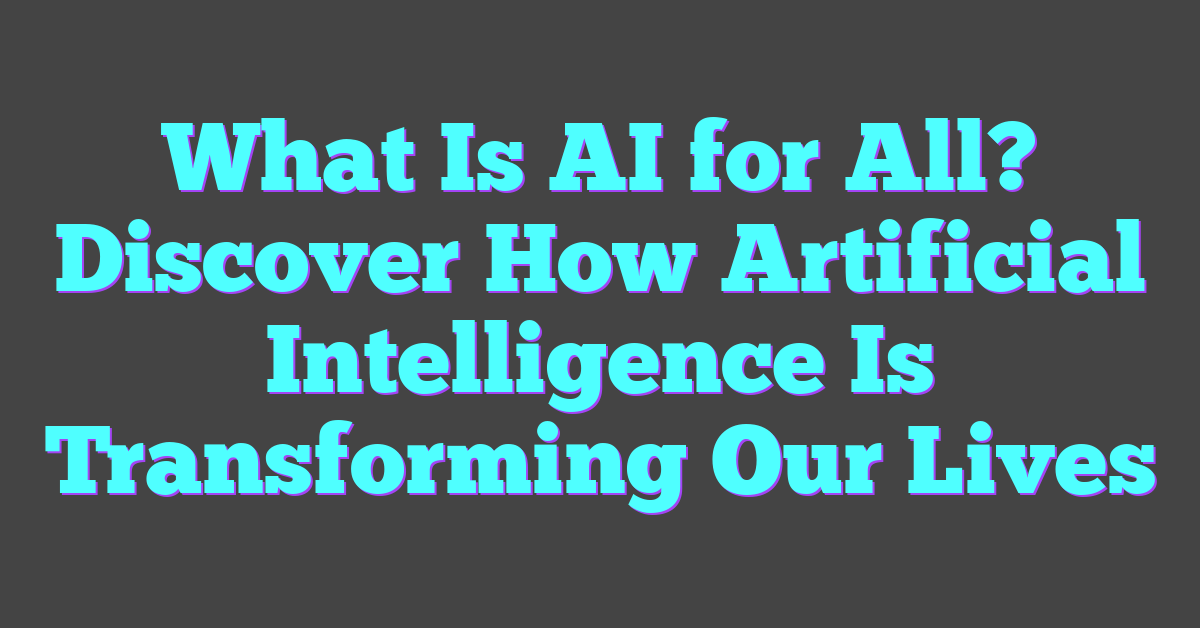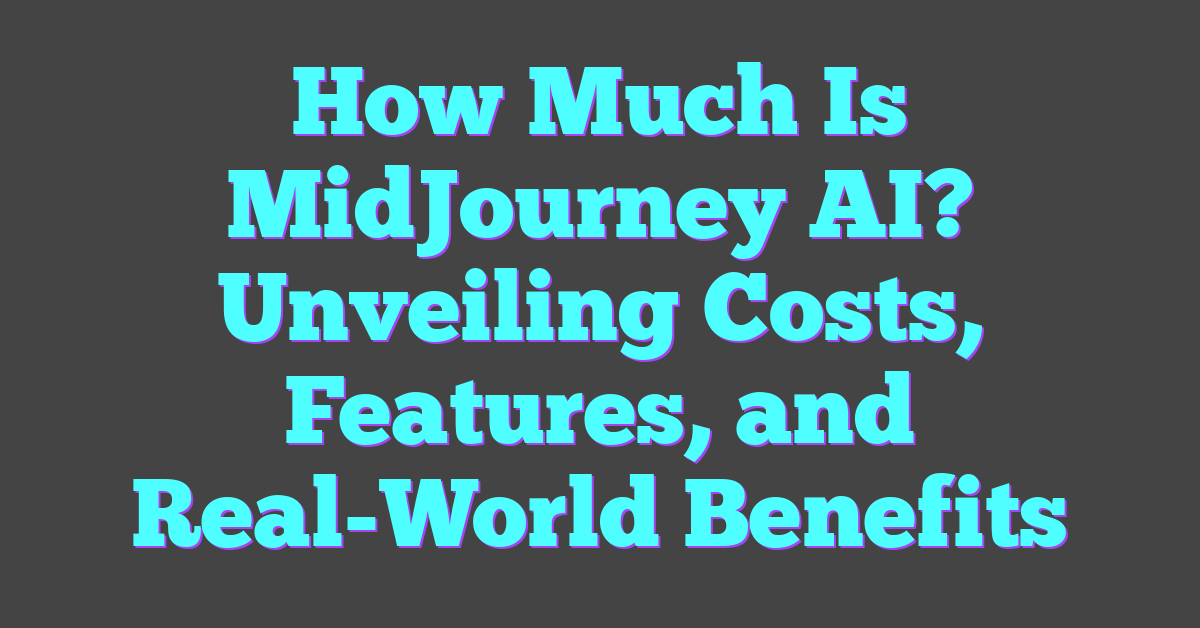Imagine a world where kids as young as eight can create their own intelligent programs. Scratch, the popular visual programming language, has made this possible by introducing young minds to the basics of coding and artificial intelligence (AI). It’s not just about dragging and dropping blocks; it’s about fostering creativity and problem-solving skills.
Scratch AI projects open a gateway to endless possibilities. Whether they’re building a chatbot, designing a game, or creating an interactive story, kids learn to think like programmers. These projects don’t just teach technical skills—they inspire a love for learning and innovation.
Overview of Scratch AI Projects
Scratch AI projects provide an exciting way for young learners to explore coding while delving into artificial intelligence concepts. Kids use Scratch’s visual programming environment to build AI-powered applications, encouraging their understanding in engaging ways.

What Are Scratch AI Projects?
Scratch AI projects leverage Scratch’s blocks-based coding to introduce foundational AI concepts. Students create projects like chatbots, image recognition games, and interactive stories. These projects utilize several basic AI principles, such as pattern recognition and data-driven decision-making, enabling kids to see how AI impacts the tools they use daily.
Importance of AI Education for Young Learners
AI education is crucial for young learners as it equips them with skills relevant to the 21st century. By engaging with Scratch AI projects, kids develop computational thinking, problem-solving abilities, and creativity. Understanding AI early prepares students for future academic and career opportunities in the rapidly evolving tech landscape.
Types of Scratch AI Projects
Scratch AI projects spark interest in coding and artificial intelligence among young learners. They introduce core concepts while making learning enjoyable.
Game Development with AI
Scratch allows users to embed AI elements in games, providing interactive experiences. For example, they can create games where characters use AI to make decisions, adapt to player actions, or even learn patterns. These projects foster skills in conditional logic, pattern recognition, and basic machine learning operations.
Storytelling Bots
With Scratch, users can develop storytelling bots that interact with players based on predefined scripts or dynamically generated narratives. By using natural language processing, these bots can respond to user inputs in an engaging manner. Examples include virtual assistants that guide players through a story and AI characters that react to choices, enhancing creativity and communication skills.
Data Analysis Programs
Scratch also supports projects focused on data analysis, allowing young learners to visualize and interpret information. Users can collect data, process it, and display results using graphs or charts within their Scratch projects. These programs teach basic data manipulation, statistical concepts, and how AI can analyze patterns in data to make informed decisions.
Benefits of Scratch AI Projects
Scratch AI projects provide numerous benefits, enriching the learning experiences of young coders. These projects enable kids to grasp fundamental AI concepts while nurturing essential life skills.
Enhancing Computational Thinking
Engagement with Scratch AI projects helps young learners enhance computational thinking. This skill involves logical reasoning, pattern recognition, and abstraction. When kids develop a chatbot, they break down the problem of human conversation into manageable parts, improving their ability to tackle complex tasks. According to research by the International Society for Technology in Education (ISTE), computational thinking is critical for problem-solving across various disciplines, equipping students to approach problems methodically and efficiently.
Fostering Creativity and Problem-Solving
Scratch AI projects foster creativity and problem-solving by allowing learners to experiment with coding ideas. When working on AI-driven games, children must design algorithms that respond to player actions, necessitating creative solutions and innovative thinking. Collaborative project-based learning, as emphasized by Edutopia, encourages students to brainstorm, prototype, and iterate, thus refining their problem-solving abilities. This creative engagement not only sparks interest in AI but also cultivates an innovative mindset applicable to diverse challenges.
Resources for Starting Scratch AI Projects
Aspiring to start a Scratch AI project can be an exciting journey into the world of coding and artificial intelligence. Here are some excellent resources to help you get started.
Online Tutorials and Guides
Several online tutorials and guides can simplify the process of initiating Scratch AI projects. Websites like Scratch’s official site and Code.org offer step-by-step tutorials tailored for beginners. These guides include video tutorials, text instructions, and downloadable project files. For a deeper understanding, sites such as Khan Academy provide interactive courses on AI and machine learning principles, which can link back to hands-on Scratch projects.
Community Forums and Support
Engaging with community forums provides invaluable support for anyone starting with Scratch AI projects. The Scratch community and forums on sites like ScratchEd and Stack Overflow enable users to ask questions, share projects, and receive feedback. Users often share tips, troubleshooting advice, and code snippets, making it easier to overcome obstacles. Joining these communities fosters a collaborative learning environment, essential for anyone keen on improving their AI and machine learning skills within the Scratch platform.
Conclusion
Scratch AI projects offer a fantastic gateway for children to dive into coding and AI concepts. They not only make learning fun but also equip young minds with essential skills for the future. With a wealth of resources available, from online tutorials to interactive courses and supportive communities, anyone can start exploring the fascinating world of AI through Scratch. These projects open doors to endless possibilities and inspire the next generation of innovators. So, why wait? Start your Scratch AI journey today and watch creativity and knowledge flourish.
Frequently Asked Questions
What is Scratch, and how does it benefit children?
Scratch is a free visual programming language designed for children. It benefits them by making coding fun and accessible, teaching computational thinking, logical reasoning, and problem-solving skills crucial for their future.
How do Scratch AI projects help children prepare for the future?
Scratch AI projects help children by teaching them pattern recognition, data-driven decision-making, and enhancing their understanding of artificial intelligence, which are valuable skills for future careers in technology and other fields.
Where can I find resources to start with Scratch AI projects?
You can find excellent resources on Scratch’s official website, Code.org, and Khan Academy. These platforms offer tutorials, interactive courses, and forums like ScratchEd and Stack Overflow for support and collaboration.
What skills do children develop through Scratch AI projects?
Children develop various skills, including computational thinking, logical reasoning, pattern recognition, and problem-solving abilities, all of which are essential for understanding AI and other advanced technologies.
Are there any community forums for Scratch AI project support?
Yes, there are several community forums for Scratch AI project support, such as ScratchEd and Stack Overflow. These forums provide collaboration opportunities and assistance from experienced members.
How do I help my child get started with Scratch AI projects?
To help your child get started with Scratch AI projects, you can utilize online tutorials and interactive courses from sites like the official Scratch website, Code.org, and Khan Academy. Community forums like ScratchEd and Stack Overflow are also helpful.




